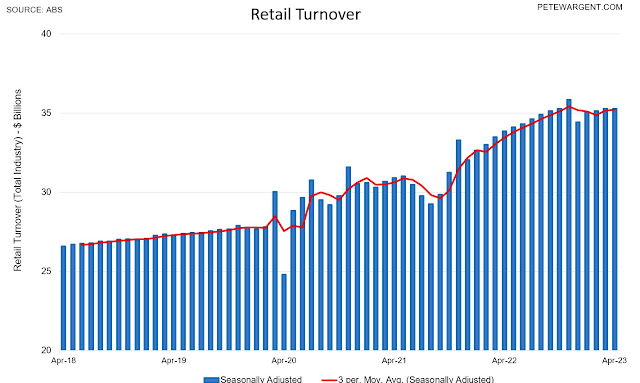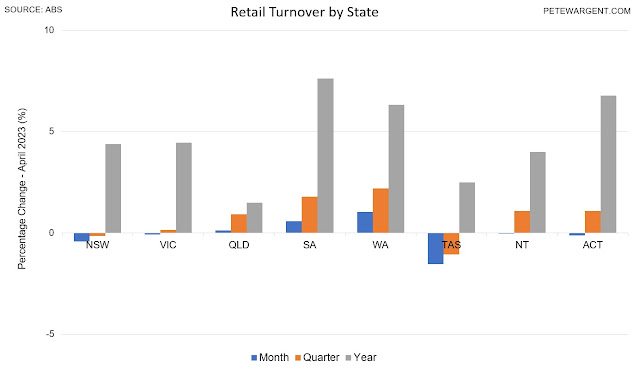Retail turnover fell slightly to a seasonally adjusted $35.26 billion in April.
These numbers don't look too bad, but don't forget retail prices are higher than a year ago, and we need to look at these figures in the context of blazing population growth, with the Aussie population projected to surge past 26½ million this weekend.
Retail volumes are therefore correspondingly falling, and significantly so on a per capita basis.
Baby Boomers are still eating out more than they used to, although cafe and restaurant turnover was flat in April.
But households goods retail expenditure is now -5 per cent lower year-on-year as higher interest rates bite.
At the state level, only Western Australia and South Australia have any signs of momentum, with sales declining in New South Wales and Victoria in April.
So what does that mean for interest rates?
A strong feature of Australia's economy is that changes to interest rates can have a fast impact on sentiment and spending, because most of us have variable rate mortgages.
The major banks credit card and spending trackers are showing that spending is slowing by the week, leading CBA to call for an extended pause on interest rates from here, with 125 basis points of interest rate cuts expected in 2024.
In other words, for those with mortgages...hang in there.

















